Interested in moths but don’t know how to entice them into your back garden without using expensive light traps? Have no fear, we have the answer: wine ropes.
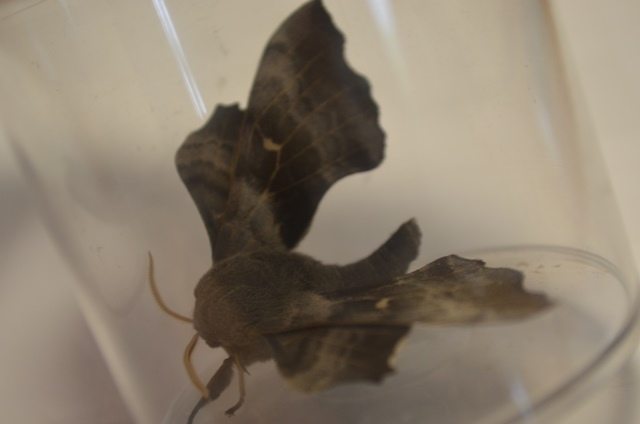
The name more or less gives the game away – wine ropes have been used by experts for many years as a way of attracting moths into their garden without the use of light traps. Below, we have a step by step guide and recipe of how to make your own wine ropes.

Unlike most wine rope recipes, the recipe we chose doesn’t actually contain any wine and was fabricated by Claradyce T. Merryweather. There is a story attached to this recipe which says that Claradyce accidentally dipped his tie in the mixture one evening and accidentally took home 470 moths in the folds of his jacket! Hopefully the mixture will be as successful for you as it was for Claradyce.
To make Claradyce’s wine ropes, you will need:
- Some cotton rope (old pyjama drawstrings or even ropes from an old fashioned mop head will do!)
- A tin of black treacle
- A small packed of raw cane sugar
- A bottle of strong smelling beer (we used Erdinger, but you can substitute this for whatever you like)
- A shot of rum
- A container/bucket for the mixture
- A spoon for mixing
- Boiling water

Step by step guide
Soak your cotton ropes in some boiling water to get rid of any residue chemicals that may be lingering.
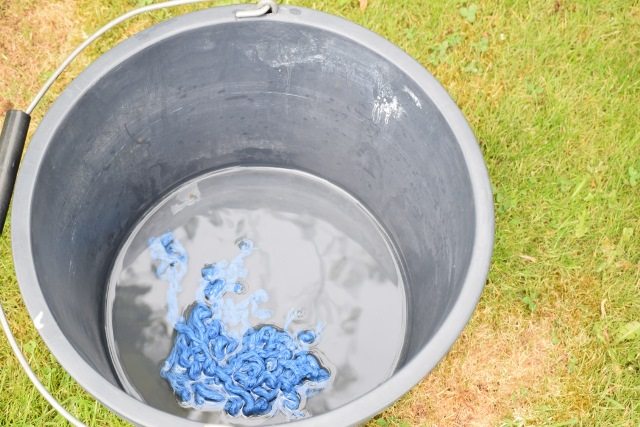
After removing the now clean cotton ropes from the bucket, setting to one side and pouring out the hot water, empty the contents of the beer into the bucket.
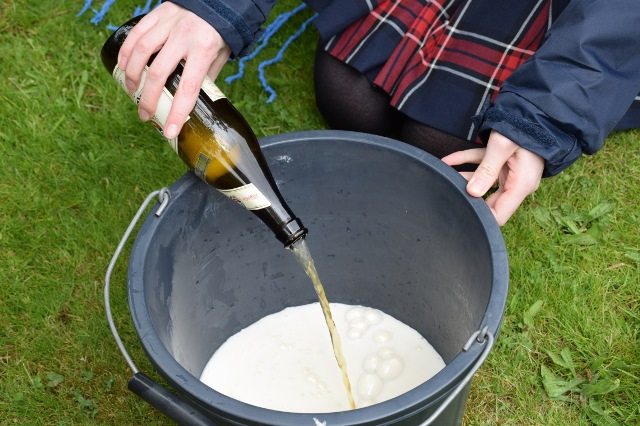
Empty the contents of the sugar packet into the bucket.
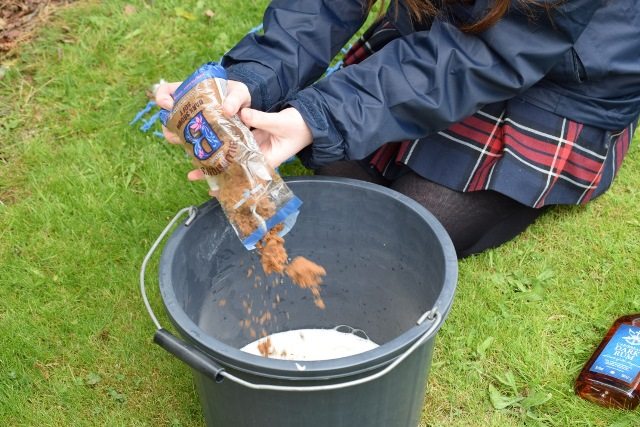
Stir the sugar into the beer to make sure the mixture is well combined and the sugar has dissolved properly.
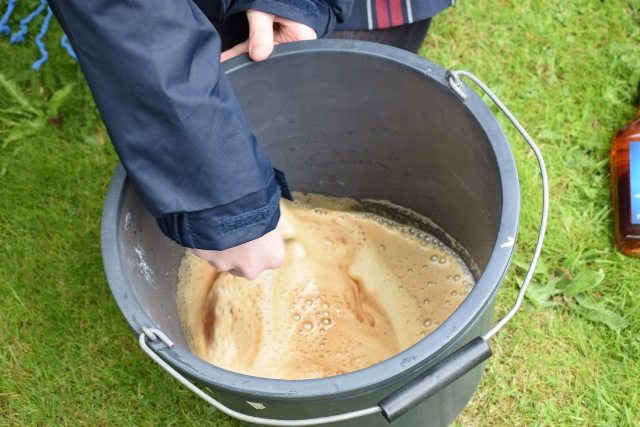
Empty the contents of the tin of dark treacle into the bucket and mix well – the mixture should be getting nice and sticky and smelly by now.
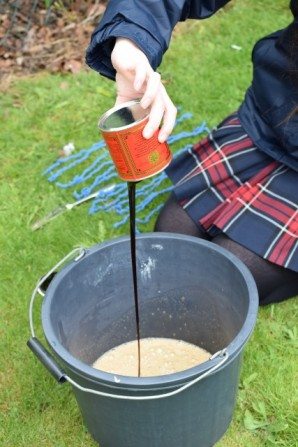
Measure out a shot of rum (or guess by eye) and add this finishing touch to the sticky, sweet, smelly moth attracting mix.
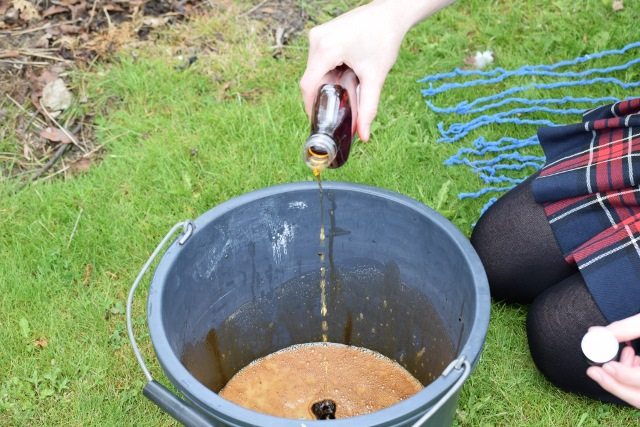
Now the mixture is moth ready, drop the cotton ropes in and leave to soak for a couple of hours.
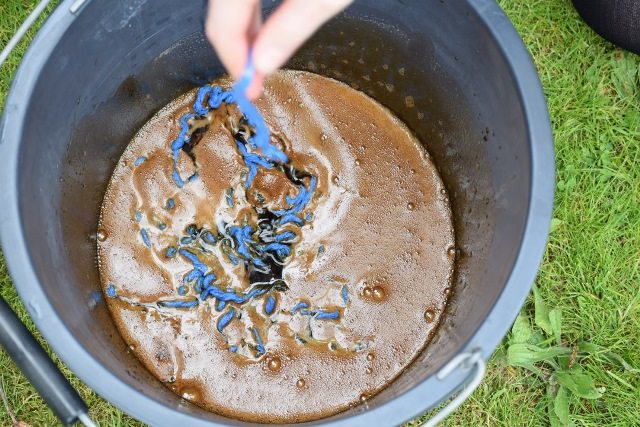
When the ropes are suitably saturated with the gooey liquid, hang the ropes up, either on a fence or off a tree branch – please be careful where you hang them as they may drip, so make sure you don’t hang them above somewhere people may lean on/sit on.
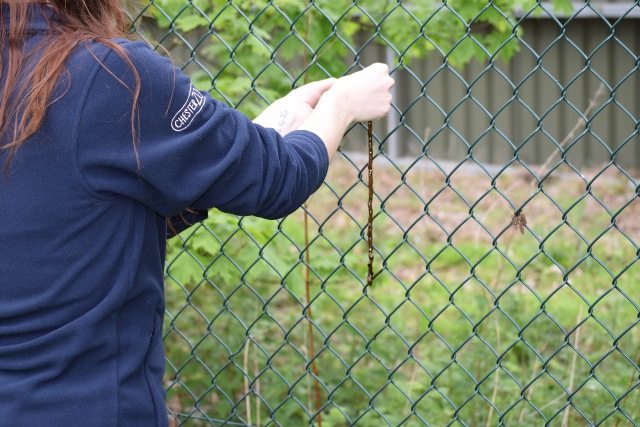
Now all you need to do is sit and wait and watch the moths come flocking in to feed on the sweet liquid food you have made for them.
If this mixture doesn’t take your fancy we have another tried and tested recipe given to us by Jeff Clarke, one of our Bioblitz 2015 experts:
Ingredients
- Half a bottle of red wine (cheap box wine is fine, the moths aren’t fussy!)
- 500g of dark treacle
- 2 large tablespoons of honey
- Cotton stings (the same as in other recipe)
Method
Bring wine to the boil and simmer for five minutes to remove much of the alcohol.
Take off the heat and stir in the molasses/treacle and bring back to simmer for a minute or so, stir continuously.
Take off the heat again and add the honey.
Back on the heat and again stir and simmer for a further minute.
Pour the solution into a container and leave to cool.
Add the cotton strings to the solution ensuring they are thoroughly soaked.
The best time to try trapping moths using wine ropes is the end of July/ beginning of August when the natural food sources for the moths are beginning to dwindle. Do try these recipes out at home, take photos and send them in to us, we would love to see what kinds of moths you will manage to attract. Please make sure when attempting these you are supervised by a responsible adult.
Once you’ve managed to identify what moths you’ve captured, and taken your pictures, please release them safely.
If you’re interested in recording the wildlife in your local area take a look at Chester Zoo’s Wildlife Connections project. It even has more guides and resources like this to help attract wildlife to your area.